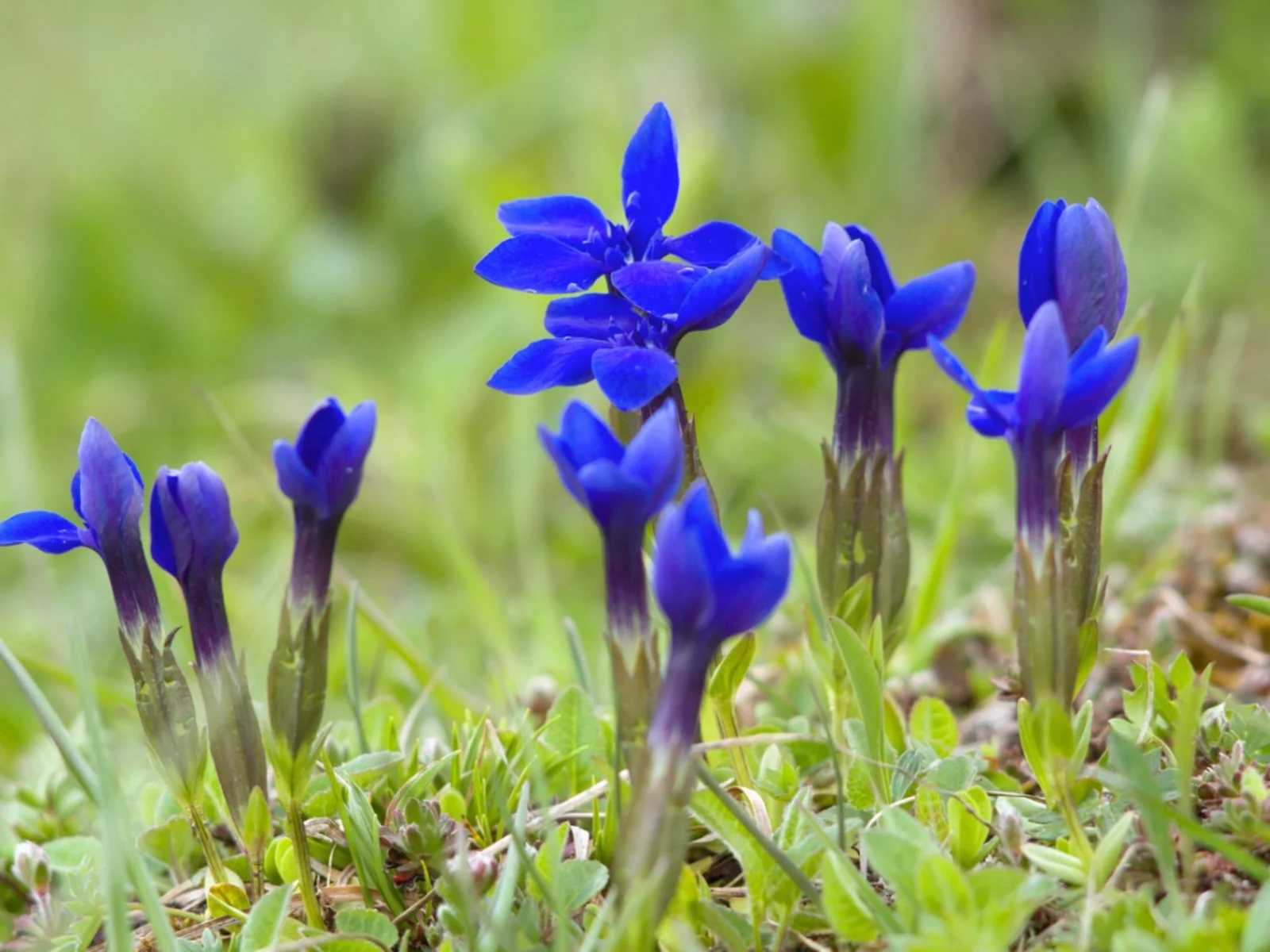
Gentiana is a genus of captivating flowering plants that are well-known for their beautiful and vibrant blossoms. With over 400 species, Gentiana plants can be found in various regions around the world, including alpine meadows, grasslands, and even in the depths of forests. These plants have captured the attention of botanists, horticulturists, and nature enthusiasts alike, thanks to their stunning colors and unique adaptations.
In this article, we will delve into the fascinating world of Gentiana and explore 11 captivating facts about these extraordinary plants. From their medicinal uses to their role in folklore and cultural traditions, Gentiana plants have a rich history that is sure to pique your curiosity. So, let’s embark on this journey and discover the wonders of Gentiana together!
Key Takeaways:
- Gentiana, a diverse genus of flowering plants, offers vibrant blooms in various colors and is valued for its medicinal properties, making it a favorite among gardeners and a symbol of purity and fidelity.
- With over 400 species, Gentiana plants thrive in mountainous regions, have specialized pollination, and are used in distilling, but some species are endangered, requiring conservation efforts to protect them.
Gentiana is a genus of flowering plants.
Gentiana is a diverse genus consisting of over 400 species of flowering plants. These plants belong to the family Gentianaceae and are known for their vibrant and showy blooms.
Gentiana flowers come in various colors.
One of the fascinating aspects of Gentiana is the wide range of colors its flowers display. From deep blues and purples to bright yellows and whites, each species of Gentiana offers a unique and visually stunning flower.
Some Gentiana species are used in traditional medicine.
For centuries, certain species of Gentiana have been used in traditional medicine for their medicinal properties. They are believed to have various health benefits, including aiding digestion, reducing inflammation, and improving liver function.
Gentiana is named after the King of Illyria, Gentius.
The name “Gentiana” is derived from the ancient Illyrian King Gentius, who was believed to have discovered the plant’s medicinal properties. He used the plant to create a beverage that was said to have healing properties.
Gentiana plants thrive in mountainous regions.
Gentiana plants are commonly found in higher altitude regions, especially in mountain ranges around the world. They are known for their ability to withstand colder temperatures and harsh conditions.
The pollination of Gentiana flowers is specialized.
Gentiana flowers have evolved a unique pollination mechanism known as “buzz pollination.” This means that certain bees and insects vibrate their wings at a specific frequency to release the pollen from the flowers’ anthers.
Gentiana is a symbol of purity and fidelity.
In many cultures, Gentiana flowers are considered symbols of purity and fidelity. They have been used in various ceremonies and celebrations, including weddings and religious rituals.
Gentiana is highly valued in the field of distilling.
Some species of Gentiana, such as Gentiana lutea, are used in the production of liqueurs and bitters. They add a distinct flavor and bitterness to alcoholic beverages, making them highly sought after in the distilling industry.
Gentiana plants have long taproots.
One of the unique characteristics of Gentiana plants is their long taproots. These roots can penetrate deep into the soil, allowing the plants to access nutrients and water even in challenging environments.
Gentiana is a favorite among gardeners.
With their stunning blooms and unique characteristics, many species of Gentiana are popular choices for gardeners. They make beautiful additions to rock gardens, borders, and other landscape designs.
Some Gentiana species are endangered.
Unfortunately, due to habitat loss and over-harvesting, several species of Gentiana are considered endangered. Conservation efforts are underway to protect these valuable plants and their ecosystems.
Conclusion
In conclusion, Gentiana is a fascinating genus of plants that captivates with its stunning beauty and remarkable characteristics. From its vibrant and colorful blossoms to its medicinal properties, Gentiana plants never fail to impress. Whether you are an avid gardener looking to enhance your garden or a nature enthusiast eager to explore the wonders of the plant world, Gentiana is a genus worth exploring. With its unique adaptations and rich history, it continues to intrigue botanists and plant lovers alike. So, next time you come across a Gentiana plant, take a moment to appreciate its beauty and remember the captivating facts that make this genus truly extraordinary.
FAQs
Q: What are some common uses of Gentiana plants?
A: Gentiana plants have a wide range of uses. Some species, such as Gentiana lutea, are used in traditional medicine for digestive disorders. In landscaping, they are popular for their beautiful blossoms and often used to create colorful floral displays.
Q: Are Gentiana plants difficult to grow?
A: While some species of Gentiana can be a bit temperamental, many are relatively easy to grow with proper care. They prefer cool climates, well-drained soil, and partial shade. It’s important to choose the right species for your climate and provide them with the appropriate growing conditions.
Q: Can Gentiana plants be grown indoors?
A: Yes, certain species of Gentiana can be grown indoors as long as you provide them with the right conditions. They require bright, indirect sunlight and well-draining soil. Indoor Gentiana plants should be watered regularly but not overwatered.
Q: Are Gentiana plants deer-resistant?
A: Yes, Gentiana plants are generally deer-resistant. Their bitter taste deters deer from feeding on them, making them a great option for gardens located in areas with deer populations.
Q: Can Gentiana plants be propagated from seeds?
A: Yes, Gentiana plants can be propagated from seeds. However, keep in mind that they can be slow-growing, and it may take some time for them to reach maturity and bloom. It’s important to provide the seeds with the right conditions for germination and growth.
Gentiana's captivating beauty and medicinal properties make this flowering plant truly remarkable. Dive deeper into the fascinating world of flowers, uncover botany's enigmatic secrets, or explore herbal medicine's untapped potential. Gentiana is just the beginning of an incredible journey through nature's wonders.
Was this page helpful?
Our commitment to delivering trustworthy and engaging content is at the heart of what we do. Each fact on our site is contributed by real users like you, bringing a wealth of diverse insights and information. To ensure the highest standards of accuracy and reliability, our dedicated editors meticulously review each submission. This process guarantees that the facts we share are not only fascinating but also credible. Trust in our commitment to quality and authenticity as you explore and learn with us.


